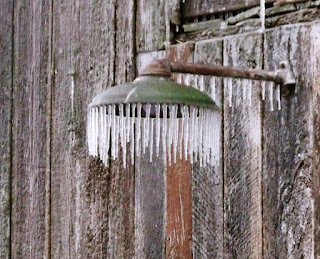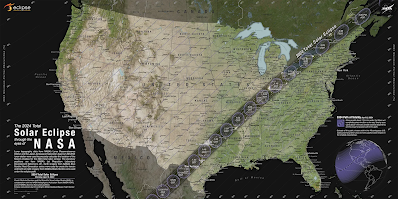What I Read in 2019
Can one put a price on a good
book? Apparently yes, and a hefty one at that.
I would say that our book budget
is out of control in our home, but that would imply that we have an actual
budget. Needless to say, we treasure good books here. But let’s cut to the
chase already. Here’s my annual “What I Read in…” Blog. 2019 Edition.
The
Lord of the Rings (Fellowship, Two Towers, and Return of the King) – JRR Tolkien
1500 or so pages for this
trilogy. This was the second time I read it. The first time was 18 years ago. I
remember staying up late each night, because it was so thrilling. This time
around, I enjoyed going at a leisurely pace. Seeing symbolism and making
connections made my second reading of Tolkien’s masterpiece less frenzied and
more fascinating.
Conclusion: A must read.
Obviously.
The Hobbit – JRR Tolkien
I read this again to my class. I’m just inserting it again because it is worthy of a yearly mention. The very title of this blog, Bravest Thing, is from a passage of this mighty book. The Hobbit is in my top five all-time favourite books.
Conclusion: A must read…
obviously again.
The Sword and the Serpent Trilogy (Sword and the Serpent, The Tenth Region of the Night, and Storm, Fire and Blood – Dr. Taylor Marshall
Why not do another massive 1500 page trilogy? Marshall’s epic books (a Christmas gift last year) tell the tale of one St. George, a saint one cannot help but love. Other saints add to the story, such as Christopher, Blaise, Katerina of Alexandria, and Nicholas. Marshall weaves together a masterful story which is sure to thrill, inspire, delight and, yes, bring a tear to the eye. One can say, “Gee, it must have been difficult to be a Roman martyr.” Or, one can read this trilogy and experience, in as much as a novel allows, what this martyrdom would have been like.
Conclusion: Very happy to have read, and own. While the story could have moved along a little faster at times (the same could be said for The Lord of the Rings), this trilogy is a valued addition to our collection, and one that our kids will surely benefit from as they grow older.
The Lion, the Witch, and the Wardrobe – C.S. Lewis
Three times I read this book this year. Thrice! Once was in preparation for teaching it. The second was during the actual English class. The third was to our kids at home. Look, it’s a great story. It’s just… just… it’s no Tolkien magnum opus, that’s all.
Conclusion – Yes, I would classify this as a must read. More in the way that one should know how to sing Jingle Bells. A classic, yes. But there are grander compositions.
The Right Side of History – Ben Shapiro
Not my typical book. I read this because a former co-worker lent it to me. You see, Shapiro red-pilled him against socialism (no small feat for a teacher), and he really wanted to share the message of the book with me. The book has some compelling sections, most notably when Shapiro describes the zeal of hatred he faces when speaking at liberal universities. It is outright eye-opening. As for the gist of the book, Shapiro takes a stab at explaining the philosophical and historical view of how we got to the current mess we’re in.
Conclusion: I’m glad this book is having a decent effect on many. It’s a good enough book, but had no effect on me.
Leisure, the Basis of Culture – Josef Pieper
In a year where I’ve had more free time than ever before (parental leave), this book was timely and indispensable. I thrive best when I’m kept very busy. Idleness is the Devil’s workshop, as we all know. Yet busy-ness for the sake of simply being busy is also something I’ve fallen prey to. Pieper's excellent essay put things in order for me. Sometimes, when given extra time, prayer, time with the family, and extra study, are ways to give glory to God. Alas, however, I will very shortly be back at my usual busy-ness at work, this time with four children at home.
Conclusion: The essay is short and sweet (unless you reread key passages many times like I did). In other words, this is well worth a read.
Infiltration: The Plot to Destroy the Church from Within – Dr. Taylor Marshall
Things get juicy here. This is Dr. Taylor Marshall’s much anticipated book explaining the unprecedented disorder which has infected the Catholic Church, right up to the Pope himself. I reviewed Marshall’s book HERE. Please check it out. I have an additional thought on his book, but that comes in conjunction with another book farther down on this list.
Conclusion: Get it. Read it. Share it. It is a duty of every Catholic to know what is going on in the Church right now, at least somewhat. Why? As Dr. Janet Smith said in an interview I heard recently, we all thought we were humming along near 100% as faithful Catholics, but since the Church crisis has emerged, we realize we were maybe going at 50%. In other words, we’re like, “holy shamoley, I can do so much better!” Knowing about the crisis should impel us all to be better Catholics. Indeed, in all honesty I can say that Pope Francis has made me a better Catholic.
The Traditional Latin Mass Explained - Dom Prosper Gueranger
This was a nice little book which explains all the parts of the Traditional Latin Mass.
Conclusion: It will be a solid reference book for me.
Defending Boyhood – Dr. Anthony Esolen
The best book I read all year, and that’s saying something. Oh that people would pick up and read this treasure. I reviewed it fully HERE.
Conclusion: For the love of everything that is good and holy, and most especially for the love of every boy who suffers relentlessly from our feminist-saturated world, read this book, put it into action, and share it with others.
Nostalgia – Dr. Anthony Esolen
Another Esolen treasure. As if he could write anything else. Nostalgia corrects a view of what the very word means. It is “algea for the noston; pain for the return, ache for the homecoming” (p. ix). In other words, true nostalgia is not to simply like “old things”, but rather it is a yearning for heaven. Yet with a great paradox: those who yearn for heaven will also treasure their homes the most. Their homes being these holy dwellings which, when realized properly, foretaste the love and unity of the eternal home. Sigh, I’ll never say it as eloquently as Esolen. Just…
Conclusion: … just read this book.
Christus Vincit – Bishop Athansius Schneider
Another book of epic proportions. Wow! I know we’re not in the time of the great Victorians, much less Shakespeare and Dante. In fact, has there ever been a more ignorant generation? Yet this year was a goldmine for Catholic reading. Perhaps second on the list was Bishop Schneider’s interview book with Diane Montagna. I reviewed it fully HERE.
Conclusion: How many times do I have to say this? This is a must read. Bishop Schneider brings clarity and truth, which makes the soul rejoice and liberals shriek in fear. What could be better than that?
Phoenix from the Ashes – Henry Sire
I am almost finished this book. At first I found the historian Sire somewhat arrogant. But then I hit his lengthy analysis of Vatican II. Then I got angry. Very very angry. Not because of Sire, but because of the clear and impeccably researched exposition he presents. This book is the perfect complement to Marshall’s Infiltration. Marshall offers a theory with some details. Sires brings substantial, if not inestimable, backing to Marshall’s theory. Ironically, this book was written well before Marshall's.
Conclusion: This book will make you angry as well. Most particularly with the nefarious Annibale Bugnini, the man who created the new Mass. But, if channeled properly, a little anger can be a good thing. Hence, I certainly recommend this book.
The Little Office of the Blessed Virgin Mary
I will end by offering a devotional read. The Little Office has a rich history and tradition. I have a post-conciliar version of the Little Office which I never found impressive. But then I was lent the copy published by Baronius Press. Game-changer, as the kids say. The psalms are translated richly (cough, not 1970’s ICEL, cough), and there is Latin side-by-side.
The worth of this book, however, came during two recent Masses I attended. One was a funeral, the other was Midnight Mass. In both cases the music was terrible and distracting, and the atmosphere was anything but reverential. I was able to pray the Little Office throughout, switching in between English and Latin, and it kept me focused on the Sacred Mysteries at hand. This is no small feat!
Conclusion: I look forward to actually buying this book instead of simply borrowing it.
That is all for 2019. I can't wait to see what 2020 will bring!



















Comments
Post a Comment